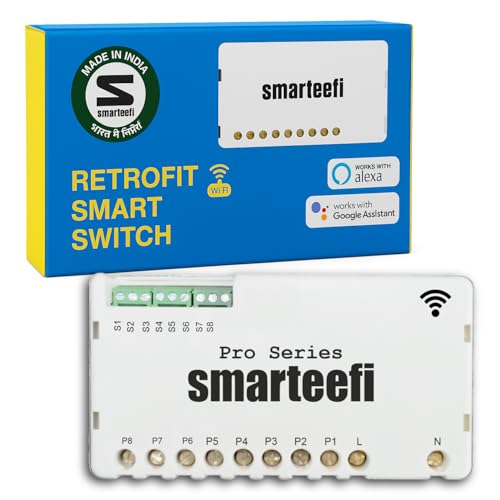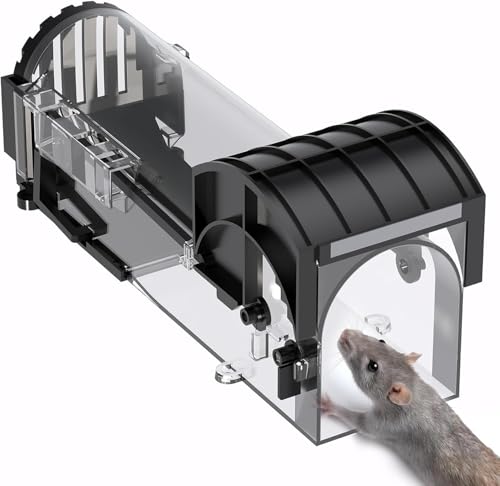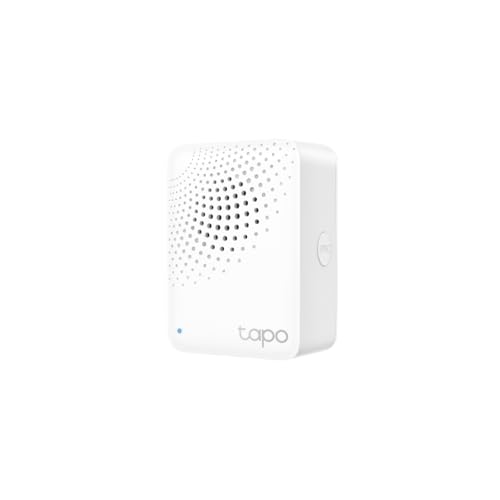The concept of a “smart home” in India is no longer a futuristic dream—it’s the dynamic present. With a burgeoning middle class, increasing smartphone penetration, and the rollout of 5G, our homes are getting a major digital upgrade. In fact, the Indian smart home market is projected to reach a massive USD 5.20 billion in 2026 and continue growing at a Compound Annual Growth Rate (CAGR) of over 30% through 2030. This isn’t just about convenience; it’s about smarter living, better security, and significant energy savings.
But with new devices flooding the market, what should you invest in for 2026? We’ve cut through the clutter to bring you an in-depth, Indian-context guide to the absolute best smart home devices and the trends shaping our connected lives.
🔒 The Priority: Advanced Security and Access Control
In Indian metros and cities, security remains the number one driver for smart home adoption. Forget traditional locks; 2026 is all about proactive, AI-powered protection. This segment, covering devices like smart cameras and locks, accounted for the largest share of the market in 2025.
The Must-Have Devices
Smart Video Doorbells with Facial Recognition: The new generation of video doorbells goes beyond a simple camera. Devices like the latest from Qubo or Google Nest Doorbell (2nd Gen) now feature enhanced AI that can accurately distinguish between a known family member, a delivery executive, and a stranger.
Expert Tip: “For peace of mind, choose a device that offers local storage (SD Card) as a backup to cloud storage. Given Indian network fluctuations, this ensures your footage is always safe,” advises security analyst Rahul Verma.
Matter-Enabled Smart Locks: Look for smart locks from brands like Godrej or Yale that support the new Matter protocol. Matter is the universal language that allows devices from different ecosystems (like Alexa, Google Home, and Apple HomeKit) to work together seamlessly. This is a game-changer for homeowners who don’t want to be locked into a single brand.
⚡ Energy Efficiency: Automation That Saves You Money
With rising electricity tariffs, saving power isn’t just eco-friendly—it’s financially smart. The next generation of smart devices is designed to optimize consumption automatically.
Intelligent Climate and Power Management
Smart AC Controllers and Thermostats: India’s diverse climate requires an adaptive approach. Devices like the Sensibo Sky or new-age smart thermostats integrate with your existing AC unit, learning your routine to pre-cool your bedroom before you arrive home from work. They often include occupancy sensors to turn off the AC or lights when a room is empty.
High-Power Smart Plugs with Energy Monitoring: Go for a sturdy 16A Smart Plug from Indian brands like Tata Power EZ Home or Wipro. These are essential for high-load appliances like geysers, ACs, and water pumps. The key feature to look for in 2026 is real-time energy monitoring, allowing you to see exactly how much power that old geyser is eating up.
| Device Category | Top Benefit (Indian Context) | Key Features to Look For (2026) |
| Security Cameras | Deterring theft, monitoring elderly/children. | AI person/pet detection, 2K/4K resolution, local storage. |
| Smart Plugs | Preventing energy wastage from high-load appliances. | 16A rating, energy monitoring, Matter support. |
| Smart Lighting | Creating ambiance, daily routine automation. | Tunable white (warm to cool), high CRI, Matter/Thread support. |
| Robotic Cleaners | Hands-free daily floor cleaning. | LiDAR navigation, self-emptying base, mopping function. |
✨ The Core of Automation: AI and Seamless Connectivity
The biggest leap in 2026 is the shift from a “smart home” to an “Intelligent Home”, powered by advanced AI and universal connectivity protocols.
The Power of Voice and AI Hubs
AI-Enhanced Smart Speakers (Google Home and Amazon Alexa): With the integration of next-gen AI models like Gemini and enhanced Alexa Plus, your voice assistant is no longer just playing music. They’ll become proactive virtual housekeepers, coordinating the activities of all your appliances.
Imagine saying, “Alexa, start my office routine,” and your desk light turns on, your smart coffee machine starts brewing, and the air purifier kicks in—all based on an AI that knows your usual working hours.
The Rise of Matter and Thread: Matter is simplifying the confusing world of protocols. Devices with Thread support create a robust, mesh network for low-power gadgets like sensors and bulbs, ensuring they respond instantly and reliably, even if your Wi-Fi is patchy. This is the future-proofing stamp you must look for on any new device.
Best Smart Home Devices
💡 Smart Wellness: Caring for You and Your Family
The focus is rapidly shifting to devices that actively monitor and improve your health and environment, a critical concern in densely populated Indian cities with high pollution levels. The “Home Healthcare” segment is the fastest-growing in the Indian smart home market.
Air Quality Monitors and Smart Purifiers: Air quality is paramount. Devices like the Dyson Big+Quiet or advanced Mi/Philips smart purifiers don’t just filter the air; they connect with a smart monitor (often a CO2 sensor) to automatically ramp up when indoor air quality drops due to cooking, poor ventilation, or outside smog.
Circadian Rhythm Lighting: This lighting automatically adjusts its colour temperature and brightness throughout the day to match your body’s natural clock. Warm, low light in the evening helps you wind down, while bright, cool light in the morning boosts focus—a small but profound change for better sleep quality.
🍽️ The Smart Kitchen: Convenience and Waste Reduction
The Indian kitchen is the heart of the home, and smart technology is transforming it from a place of labour to one of effortless, personalized cooking. In 2026, the focus is on efficiency, health, and minimizing food waste, a significant concern in Indian households.
Automation for the Indian Palate
AI-Powered Cooking Appliances: Beyond simple smart ovens, 2026 sees the rise of appliances like smart pressure cookers and dosa/roti makers with embedded AI. These devices can download cloud-based regional recipes, automatically adjust cooking time and pressure based on the type and quantity of ingredients (like different kinds of lentils or rice), and even communicate with your voice assistant to inform you when the dal is perfectly done.
Touchless Water Dispensers and Filters: Hygiene is a key priority. Touchless, UV-enabled water purifiers that dispense based on proximity or voice command are becoming the norm. Furthermore, smart filters now track water quality parameters like TDS (Total Dissolved Solids) in real-time, notifying you precisely when a filter change is genuinely necessary, instead of a pre-set schedule.
Best Smart Home Devices Comparison Table
🧑💻 Seamless Connectivity: The Home Network Backbone
A smart home is only as smart as its network. In the age of 5G, 4K streaming, simultaneous work-from-home demands, and dozens of connected devices, the home network backbone is a critical investment that often gets overlooked. Poor connectivity cripples the entire smart ecosystem.
Why Your Router Needs an Upgrade
Mesh Wi-Fi 6/7 Systems: Traditional single routers can’t handle the traffic or the physical spread of most Indian homes and apartments, leading to ‘dead zones.’ Mesh systems (like those from TP-Link Deco or Netgear Orbi) blanket the entire home in stable Wi-Fi. Look specifically for Wi-Fi 6E or Wi-Fi 7 compatibility in 2026 to handle high-bandwidth tasks like high-res video surveillance and AR/VR applications.
Centralized Automation Hubs: As the number of sensors, bulbs, and switches grows, a dedicated central hub (often a Matter Controller) is vital for local, low-latency control. This allows your home’s routines to run instantly, even if the internet connection temporarily drops—crucial for security and immediate lighting control. This hub acts as the brain, managing all the small, low-power Zigbee and Thread devices.
🏡 20 Best Smart Home Devices for a Smarter Indian Home (2026)
| # | Device Category | Key Use in Indian Home (2026 Trend) | Example Brand/Product Type |
| 1 | Smart Speaker/Hub | Central AI Control in English & Regional Languages (Hindi, etc.), acts as the brain for all other devices. | Amazon Echo (with Alexa), Google Nest Hub (with Gemini AI) |
| 2 | Smart Plugs (10A & 16A) | Converts regular appliances (geyser, fan, TV) into smart ones, crucial for Retrofit Automation. | Wipro, Mi, TP-Link Kasa, Tata Power EZ Home |
| 3 | Smart Security Camera (Indoor) | Remote live monitoring, two-way talk, and motion alerts for indoor security and monitoring staff/pets. | Xiaomi, TP-Link Tapo, Qubo, Ring |
| 4 | Smart Lighting Bulbs (Wi-Fi/Zigbee) | Energy-efficient lighting with Circadian Lighting features (mimics natural light cycle for wellness). | Philips Hue, Mi LED, Wipro Smart Bulb |
| 5 | Smart Modular/Retrofit Switches | Replaces old switchboards for seamless control of lights/fans, ideal for existing Indian homes. | Wipro, Goldmedal i-Touch, Heptagon |
| 6 | Smart AC/IR Controller | Unifies control for all IR devices (AC, TV, Set-Top Box) into one mobile app/voice command. | Broadlink, Oakter, Mi Smart IR Controller |
| 7 | Smart Video Doorbell | Enhanced security with face recognition, remote viewing, and two-way communication with visitors. | Google Nest Doorbell, Ring Video Doorbell, Qubo |
| 8 | Robot Vacuum Cleaner | Automated floor cleaning and mopping, a growing convenience essential in busy Indian households. | iRobot Roomba, Xiaomi Mi, Eufy Robovac |
| 9 | Smart Door Lock (Fingerprint/OTP) | Keyless entry via biometric, PIN, or smartphone app; increasing in popularity for higher security. | Yale, Godrej, August |
| 10 | Smart Air Purifier | AI-driven air quality monitoring and auto-purification, vital due to rising urban air pollution. | Dyson, Xiaomi, Coway |
| 11 | Smart Leak/Flood Sensor | Sends instant alerts for water leakage (especially in kitchens/bathrooms), preventing damage in apartments. | Aqara, Samsung SmartThings |
| 12 | Smart TV (Voice Control) | Entertainment hub with built-in smart assistant integration for controlling other devices. | Samsung, LG, Sony (with Google/Alexa built-in) |
| 13 | Smart Display Hub | Visual smart control center for the home, video calling, and displaying security feeds (e.g., Echo Show). | Amazon Echo Show, Google Nest Hub Max |
| 14 | Smart Garage/Gate Opener | Remote control of main gate/car garage, increasing convenience and security. | GoControl, MyQ compatible devices |
| 15 | Smart Home Security System (DIY) | Comprehensive, self-monitored system with window/door sensors and siren for full home safety. | Ring Alarm, Honeywell |
| 16 | Smart Water Heater/Geyser | Pre-schedule heating and auto-shutoff to save electricity and prevent wastage. | Bajaj, Havells (Smart Models) |
| 17 | Smart Garden/Irrigation Controller | Automated, weather-aware watering for plants, crucial for saving water in water-scarce regions. | Rachio, Rain Bird, DIY IoT solutions |
| 18 | Smart Health Monitor (Integrated) | Wearables or dedicated devices that sync health data with the home system for automated wellness routines. | Apple Watch (HomeKit), Integrated Blood Pressure Monitors |
| 19 | Smart Curtains/Blinds | Automated opening/closing based on sunrise/sunset or user routines for energy saving and privacy. | Tuya-compatible motors, Xiaomi Smart Curtains |
| 20 | Matter-Compatible Hub/Controller | Future-proofing your home with a universal standard for better interoperability between brands. | Latest-gen Google Nest, Amazon Echo, Apple HomePod |
Smart homes in 2026 are not just about convenience—they’re about control, sustainability, and safety. Whether you want to save energy, enhance comfort, or simply enjoy futuristic tech, the above smart devices offer everything you need to create a connected home that thinks for you.















